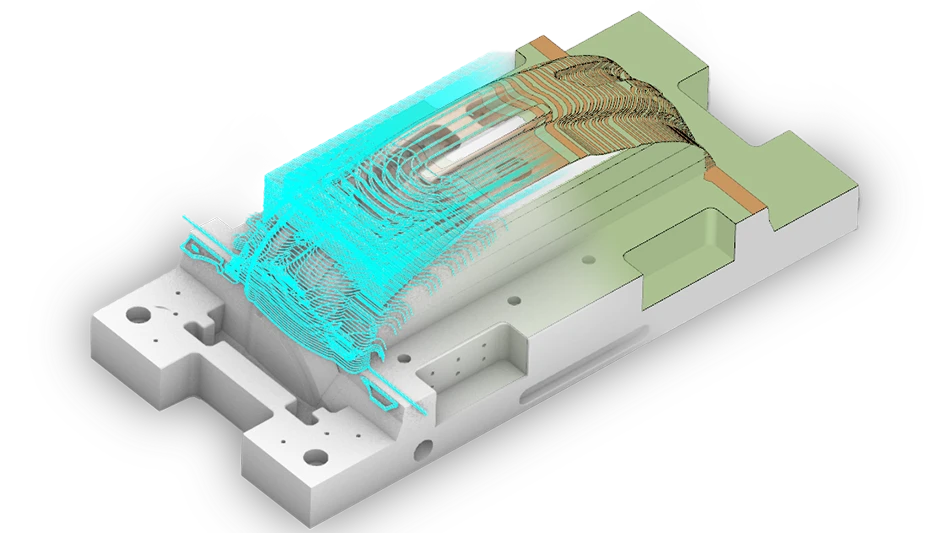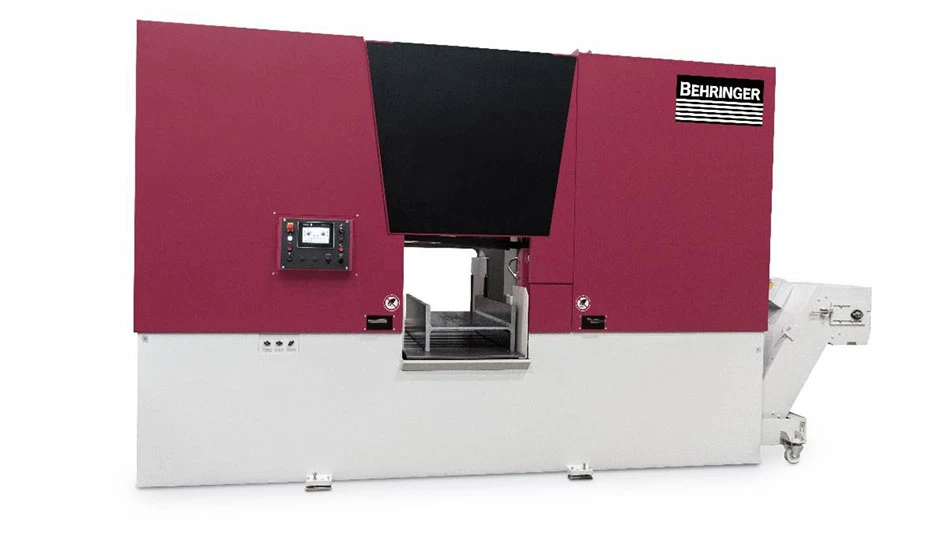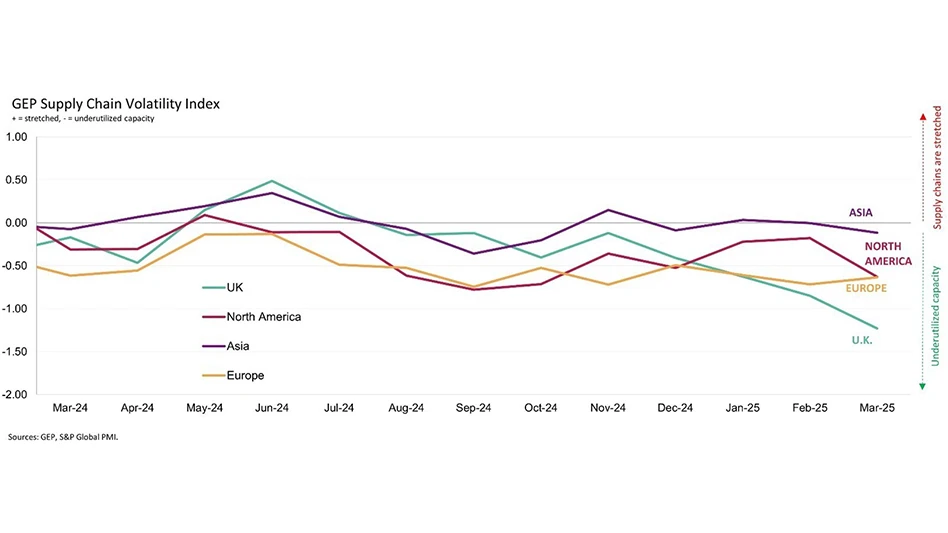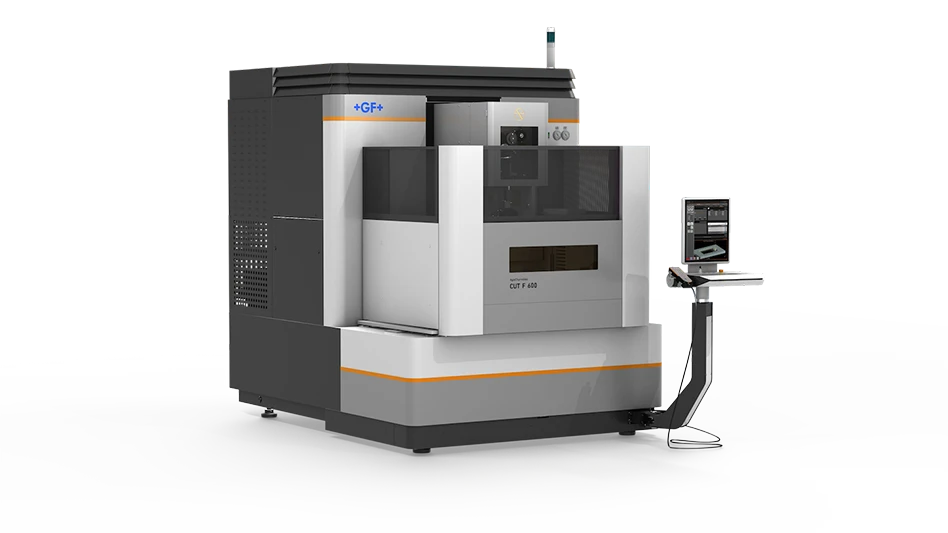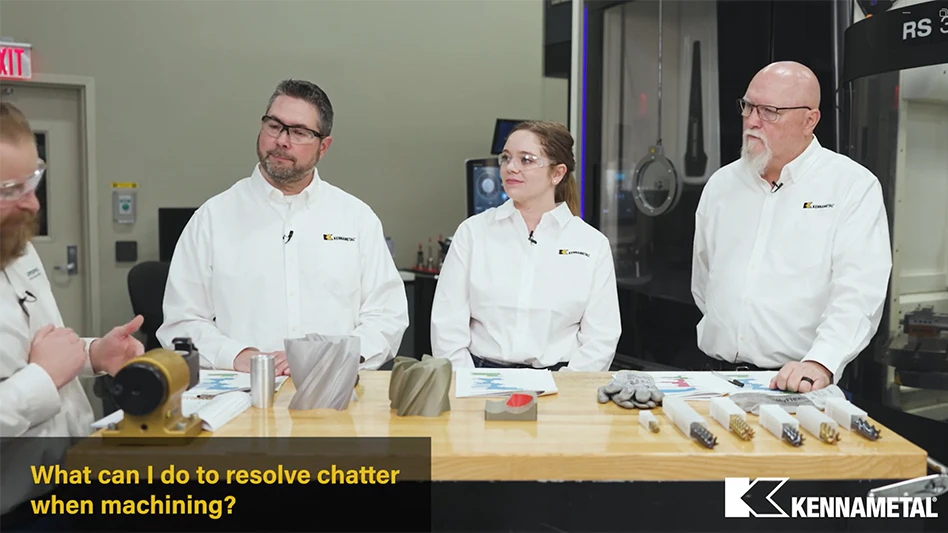
Selecting the right motor type is an important aspect of optimizing machine performance. Knowing which type of motor to use in a given application will improve the cost and performance, and simplify the design of your next machine.
While the total number of electrically driven motor types approaches at least a dozen, let's focus mainly on motors used in positioning applications. That is, in applications involving the precise control of the final destination position, or the path through which the machine must travel. In this application subset, there are really three motor types commonly in use today:
- Step motors
- DC-brush motors
- Brushless DC (permanent magnet) motors.
All electric motors use electromagnetic fields to create torque. A good basic model for how torque is generated is a simple bar magnet, shown in figure 1. For the motor to spin, the rotor (the part of the motor that rotates) must be oriented orthogonally (90°) to the magnetic field of the stator (the part of the motor that is attached to the frame and does not rotate).

Figure 1: Maximum torque
The task of keeping the orientation of the rotor and stator magnetic fields correct is known as commutation, also, some motors use electrical coils in the rotor to generate magnetic fields, while some use permanent magnets.
In a brushless DC motor, the rotor magnetic field is generated by fixed permanent magnets and the stator field is generated by coils that are commutated by external electronics to maintain the correct field angle. A DC brush motor uses exactly the opposite configuration, using electromagnetic coils in the rotor and fixed magnets in the stator.
To understand the process of motor selection better, let's look at each motor type in turn, starting with step motors.
Are you getting a pulse?
Step motors remain one of the most popular motor types for positioning applications due to their reliability, low cost, and ease of operation.
Although they look and sound different, step motors are actually similar to brushless DC motors in that they have coils in their stator to control phase angle. In fact one way to think of a step motor is as a brushless DC motor with a very high pole count. Pole count means the number of magnetic north/south transitions in one complete rotation of the motor. While brushless DC motors most commonly have four poles per rotation, step motors most commonly have 100 poles.
This distinction, along with differences in the properties and geometry of the construction materials, make step motors self-positioning. They can move forward or backward in precise increments without need for encoder feedback.
Despite these advantages, step motors have drawbacks. Due in large part to the high pole count, step motors create noise as they rotate, and induce vibrations that can disturb the load. Vibration can be reduced using microstepping techniques or even mechanical dampers, but these solutions seldom eliminate the problem completely.
Another significant limitation of step motors is that they have low high-end speeds. For most systems, 5,000rpm is the most that can be expected. And the torque that is available from a step motor drops significantly as velocities increase. Finally, step motors are generally not available in power ranges above several hundred watts. The most common NEMA motor sizes for step motors are 17, 23, and 34.
Spin control
Figure 2 shows typical waveforms to drive a step motor. Step motors are multi-phase devices, meaning two or more motor coils must be electronically driven to create motion. Most step motors have two coils or phases, although more exotic configurations that increase positioning accuracy such as three-phases or five-phases are becoming more popular.

Figure 2: Typial wave forms
Most engineers do not think of a step motor as requiring "commutation", but this term is definitely applicable. In the world of step motors, the commutation techniques that the amplifiers employ are given special names such as fullstep, half-step, or micro-step drive. These different techniques refer to the number of power levels that are applied to each motor coil during an electrical cycle.
A full-step drive uses an "all-on" or "all-off" technique, a half-step drive can separate the torque level into three distinct levels (all off, halfway, all on), and a microstep drive can generate a more or less sinusoidal signal. The more the waveform resembles a sinusoid, the smoother and more precise the degree of control.
Whatever drive method is used, the motor moves forward or backward by advancing the drive waveform electrically forward or backward. A "full" step means one 90-electrical-degree movement. Step motors usually come constructed with 1.8-mechanicaldegree per full electrical step (or 90 electrical-degrees). So this means a 1.8 degree stepper would have 50 complete electrical cycles (one complete cycle being 360 electrical-degrees), or 200 full steps per mechanical motor rotation.
If a micro-stepping scheme is used, you can calculate the positioning resolution by multiplying the "microsteps per full steps" by the "degrees per full step" rating. Thus, if you use a microstep drive with 64 microsteps per full step, and you use a step motor with 200 full steps per motor rotation, you have 12,800 different commandable positions per motor rotation that you can move to.
With step motors, accuracy and resolution are two different things, because a step motor is not perfectly linear, nor is it perfectly stiff. Thus the position you command may not match the theoretical position you want your motion system to go to.
Smoth as silk
DC brush motors are used in a wide variety of applications that require positioning, and often in simpler applications that require speed or torque control. By themselves, however DC brush motors have no sense of position. This means they must be connected to an encoder for use in positioning applications. The encoder provides the position feedback, which is connected to a controller, which in turn generates an output command using a PID algorithm or similar servo scheme.
DC brush motors are relatively inexpensive, and are available in a large variety of sizes, up to a kilowatt and beyond. They have relatively "flat" torque-speed curves, which means they generate torque at the same level over a wide operating speed range. Many DC Brush motors can operate at speeds of 10,000rpm or higher. DC servo motors are smooth and relatively quiet.
However, DC servomotors have two disadvantages. The first is that DC brush motors use mechanical "brushes" located inside the motor for commutation. These brushes can wear out, and can cause electrical arcing that generates EMF. The second is that DC servomotors have relatively low torque output for a given size. This is because the DC brush motor's current is driven through coils located on the rotor. From a thermodynamic standpoint, the rotor is not "anchored" to the motor frame, and therefore the total amount of energy that can be removed from the coil is limited.
Brushless DC Motors
Brushless DC motors have been gaining in popularity in the last several years. For many applications, they provide a no-compromise solution in servo control applications. Brushless DC motors are relatively smooth and quiet, and do not use mechanical brushes for commutation. In addition, brushless DC motors drive their torque-generating current through the stator, which allows the brushless DC motor to generate high torque for a given package size.
Sponsored Content
Still relying on manual sorters?
Let AI do the heavy lifting. Waste Robotics delivers reliable, high-performance robots tailored for complex waste streams. They require minimal maintenance, are easy to operate, and are designed to boost your recovery rates. Smarter sorting starts with the right partner. Waste Expo Booth #1969 & REMA #2843
Click here to see our robots in action!Sponsored Content
Still relying on manual sorters?
Let AI do the heavy lifting. Waste Robotics delivers reliable, high-performance robots tailored for complex waste streams. They require minimal maintenance, are easy to operate, and are designed to boost your recovery rates. Smarter sorting starts with the right partner. Waste Expo Booth #1969 & REMA #2843
Click here to see our robots in action!Sponsored Content
Still relying on manual sorters?
Let AI do the heavy lifting. Waste Robotics delivers reliable, high-performance robots tailored for complex waste streams. They require minimal maintenance, are easy to operate, and are designed to boost your recovery rates. Smarter sorting starts with the right partner. Waste Expo Booth #1969 & REMA #2843
Click here to see our robots in action!Sponsored Content
Still relying on manual sorters?
Let AI do the heavy lifting. Waste Robotics delivers reliable, high-performance robots tailored for complex waste streams. They require minimal maintenance, are easy to operate, and are designed to boost your recovery rates. Smarter sorting starts with the right partner. Waste Expo Booth #1969 & REMA #2843
Click here to see our robots in action!Sponsored Content
Still relying on manual sorters?
Let AI do the heavy lifting. Waste Robotics delivers reliable, high-performance robots tailored for complex waste streams. They require minimal maintenance, are easy to operate, and are designed to boost your recovery rates. Smarter sorting starts with the right partner. Waste Expo Booth #1969 & REMA #2843
Click here to see our robots in action!Sponsored Content
Still relying on manual sorters?
Let AI do the heavy lifting. Waste Robotics delivers reliable, high-performance robots tailored for complex waste streams. They require minimal maintenance, are easy to operate, and are designed to boost your recovery rates. Smarter sorting starts with the right partner. Waste Expo Booth #1969 & REMA #2843
Click here to see our robots in action!Sponsored Content
Still relying on manual sorters?
Let AI do the heavy lifting. Waste Robotics delivers reliable, high-performance robots tailored for complex waste streams. They require minimal maintenance, are easy to operate, and are designed to boost your recovery rates. Smarter sorting starts with the right partner. Waste Expo Booth #1969 & REMA #2843
Click here to see our robots in action!Sponsored Content
Still relying on manual sorters?
Let AI do the heavy lifting. Waste Robotics delivers reliable, high-performance robots tailored for complex waste streams. They require minimal maintenance, are easy to operate, and are designed to boost your recovery rates. Smarter sorting starts with the right partner. Waste Expo Booth #1969 & REMA #2843
Click here to see our robots in action!Sponsored Content
Still relying on manual sorters?
Let AI do the heavy lifting. Waste Robotics delivers reliable, high-performance robots tailored for complex waste streams. They require minimal maintenance, are easy to operate, and are designed to boost your recovery rates. Smarter sorting starts with the right partner. Waste Expo Booth #1969 & REMA #2843
Click here to see our robots in action!Sponsored Content
Still relying on manual sorters?
Let AI do the heavy lifting. Waste Robotics delivers reliable, high-performance robots tailored for complex waste streams. They require minimal maintenance, are easy to operate, and are designed to boost your recovery rates. Smarter sorting starts with the right partner. Waste Expo Booth #1969 & REMA #2843
Click here to see our robots in action!Sponsored Content
Still relying on manual sorters?
Let AI do the heavy lifting. Waste Robotics delivers reliable, high-performance robots tailored for complex waste streams. They require minimal maintenance, are easy to operate, and are designed to boost your recovery rates. Smarter sorting starts with the right partner. Waste Expo Booth #1969 & REMA #2843
Click here to see our robots in action!Brushless DC motors are available in a wide variety of power ranges up to and beyond a kilowatt. Like DC brush motors, they have relatively flat torquespeed curves, so that they can be made to operate at high speeds – some motors can go up to 30,000rpm or more.
Despite these important advantages, brushless motors have a few disadvantages. Like DC brush motors, they have no sense of their own position and thus require a position encoder and servo control loop. Also, they are usually more expensive than DC servo and step motors, because they typically use rare earth magnetic materials in their rotors to generate torque. A third disadvantage is that they must be commutated externally. This increases the complexity of the controls, and at least for positioning applications, requires the installation of Hall sensors or phasing tracks on the optical encoder disk.
Brushless DC motors are commutated externally by special control electronics. Commutation feedback is typically provided by devices known as Hall sensors. These sensors provide a digital reference signal that allows the controller to excite each of the three motor phase coils at the right time based on the shaft angle of the motor. The top portion of figure 3 shows typical commutation waveforms for three phase brushless DC motors.
Shown in the bottom of figure 3 is a higher performance version of Hall-sensor commutation, known as sinusoidal commutation. This technique uses the motor's position encoder to generate continuously varying sinusoidal signal. The benefit is smoother motion and more efficient motor operation.

Figure 3: The top portion of the chart shows three-phase brushless CD commutation waveforms. The bottom two charts show Hall-based and sinusoidal drive wave forms for a three-phased brushless DC motor.
An even higher performance version of sinusoidal commutation that has gained acceptance recently is called Field Oriented Control, (FOC). FOC uses mathematical transforms (Park and Clarke transforms) to dereference the rotation frame of the motor, which, while computationally intense, allows greater high-end performance.
Summary
Before starting a motion control project, try to examine your system's requirements as a whole, balancing the cost of the motor with the cost and complexity of the control system. Today, it is possible to buy off-the-shelf motion control solutions at the IC level, the card level or the module level. Make sure these controls have easy-to-use setup software, and provide features like autotuning, which makes working with servo motors almost as easy as working with step motors.
Performance Motion Devices, Inc.
Lincoln, MA
pmdcorp.com
Get curated news on YOUR industry.
Enter your email to receive our newsletters.

Explore the January February 2008 Issue
Check out more from this issue and find your next story to read.
Latest from Today's Medical Developments
- Unlocking GenAI's potential: Insights from the Supply Chain Horizons 2025 report
- Celebrating 75 years of innovation at Jorgensen Conveyor and Filtration Solutions
- Free webinar to offer expert advice on optimizing machining operations
- How collaboration between companies can elevate manufacturing
- AI meets innovation: Cambridge's device transforms heart screening
- Mazak and Premier Engineering team up for greater agility in Florida
- Struggling with inventory or supply chain pressures? Find answers in our free webinar
- Free webinar: Advanced manufacturing solutions to support the Navy

